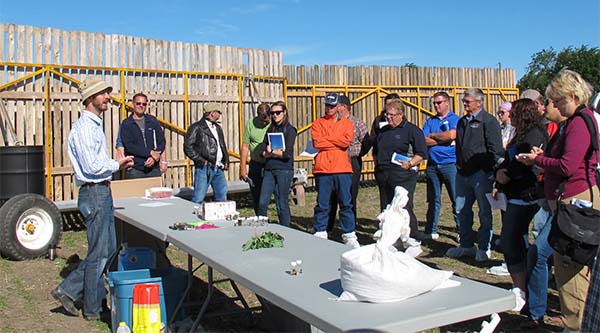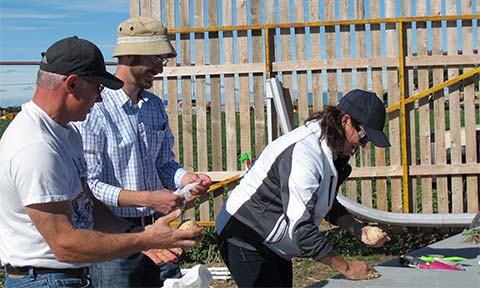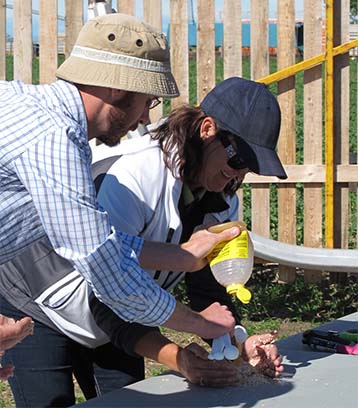From the Fall 2013 Farming Smarter Magazine
At the Farming Smarter Field School in June, Dr. Jeremy Hummel challenged audience members to make bait balls that attract wireworms once buried in the soil of a field. Hummel recommends using several buried balls especially where you suspect previous-year wireworm damage.
He used a bait ball recipe based on published recommendations from Dr. Bob Vernon of Agriculture and Agri-Food Canada.
“The exact amounts are not critical – what we’re trying to create is a mass of moistened sugars and starches that will feed microorganisms quickly (the honey,) but also provide a lot of decay (oatmeal or flour) to release CO2.”
|
Here is the recipe 1 to 1½ cups quick oats or wheat flour (we used quick oats) – approximately a baseball-sized amount 2 tbsp honey enough water to form the ball into a sticky mass, about ½ cup Mix ingredients to create a sticky ball, then placed in a pouch made of cheesecloth, an old sock, etc. – any fabric Sink the ball approx. 4-6 inches into the soil. |
|
Dr. Hummel says to pull it up after about a week. “You’ll have to sort through the decaying ball to find the yellow-orange wireworms inside.” He cautions that, “if bait balls are left in the soil too long, the decay progresses too far and the wireworms will no longer be attracted.”
|
|
|

 Dr. Hummel demonstrates how to cut a sock for wireworm bait balls at the 2013 Farming Smarter Field School
Dr. Hummel demonstrates how to cut a sock for wireworm bait balls at the 2013 Farming Smarter Field School The race is off! Dr. Hummel has Field School 2013 guests compete
The race is off! Dr. Hummel has Field School 2013 guests compete Remember to add honey to your bait balls!
Remember to add honey to your bait balls!